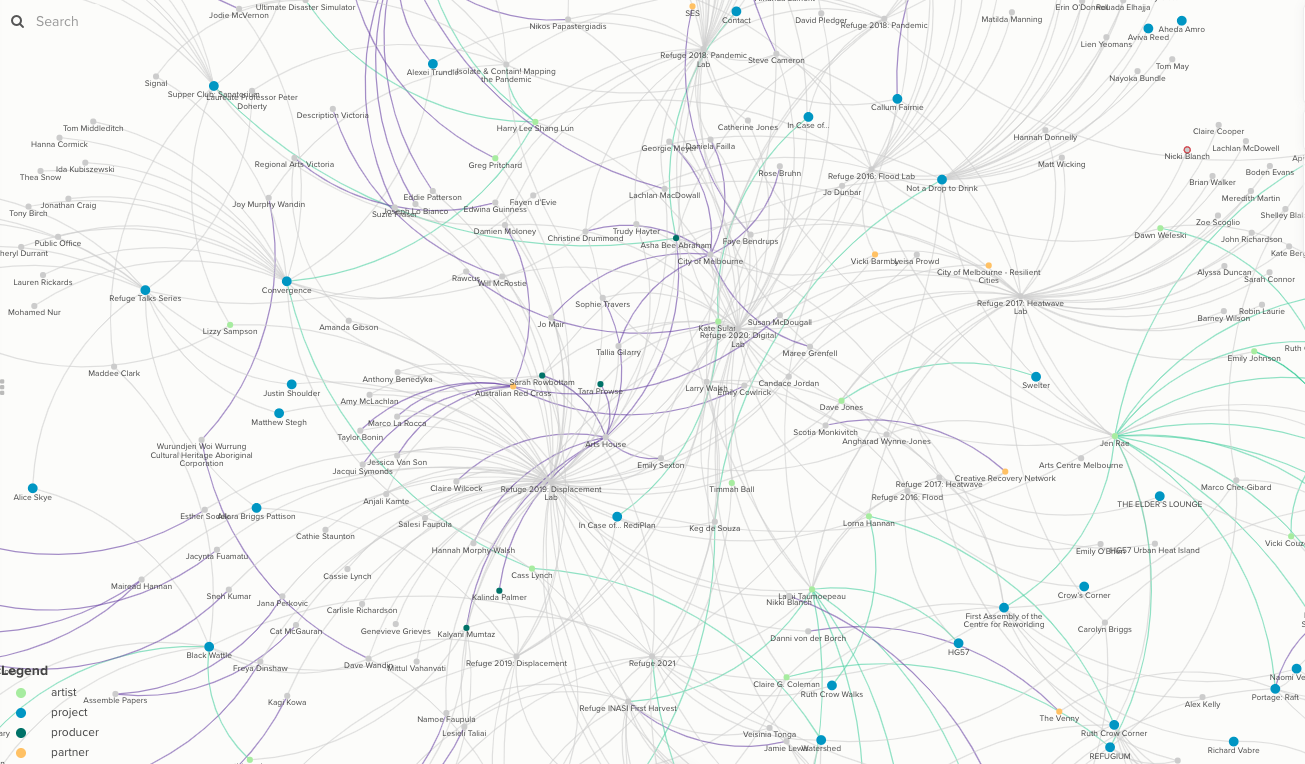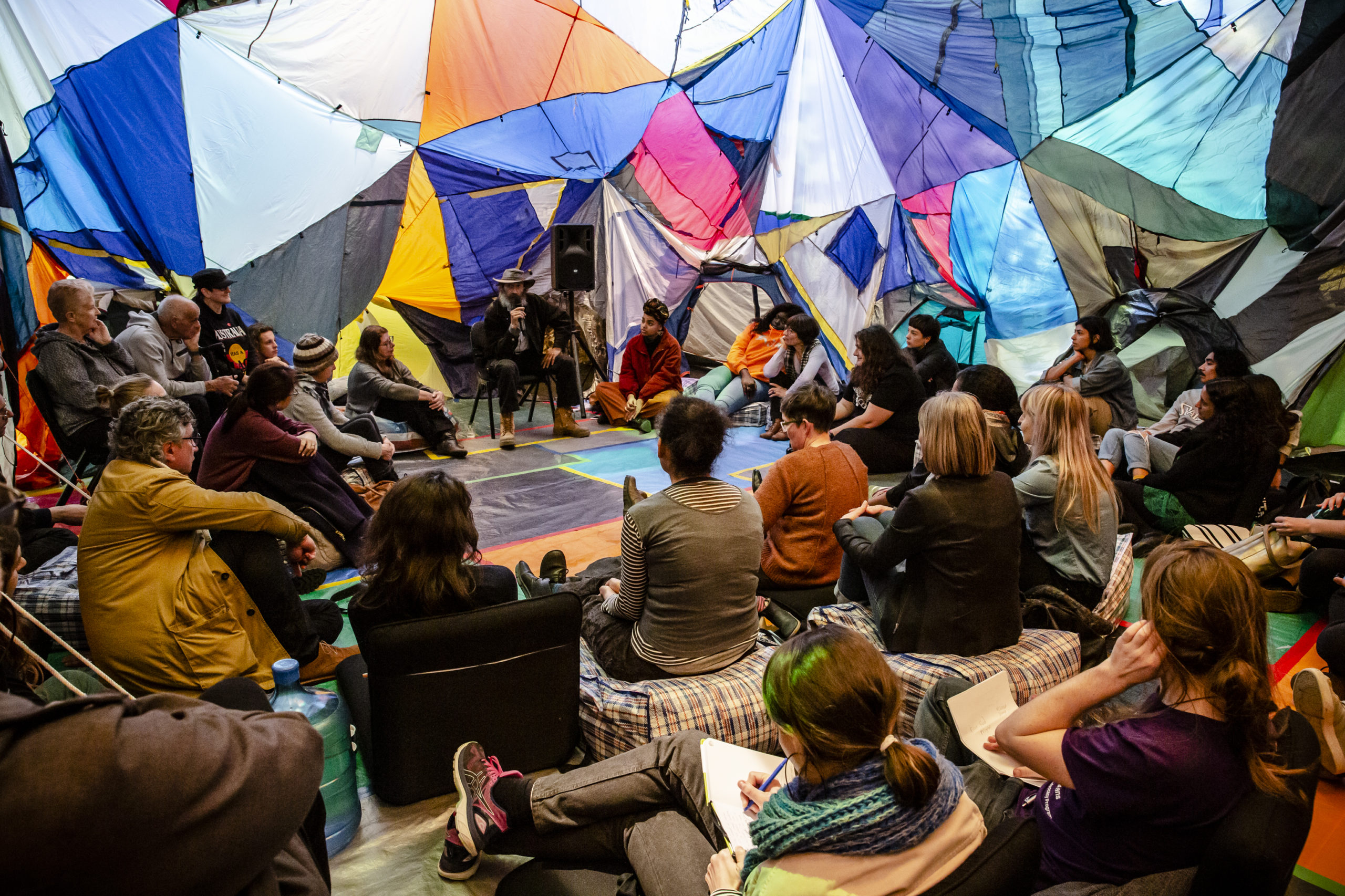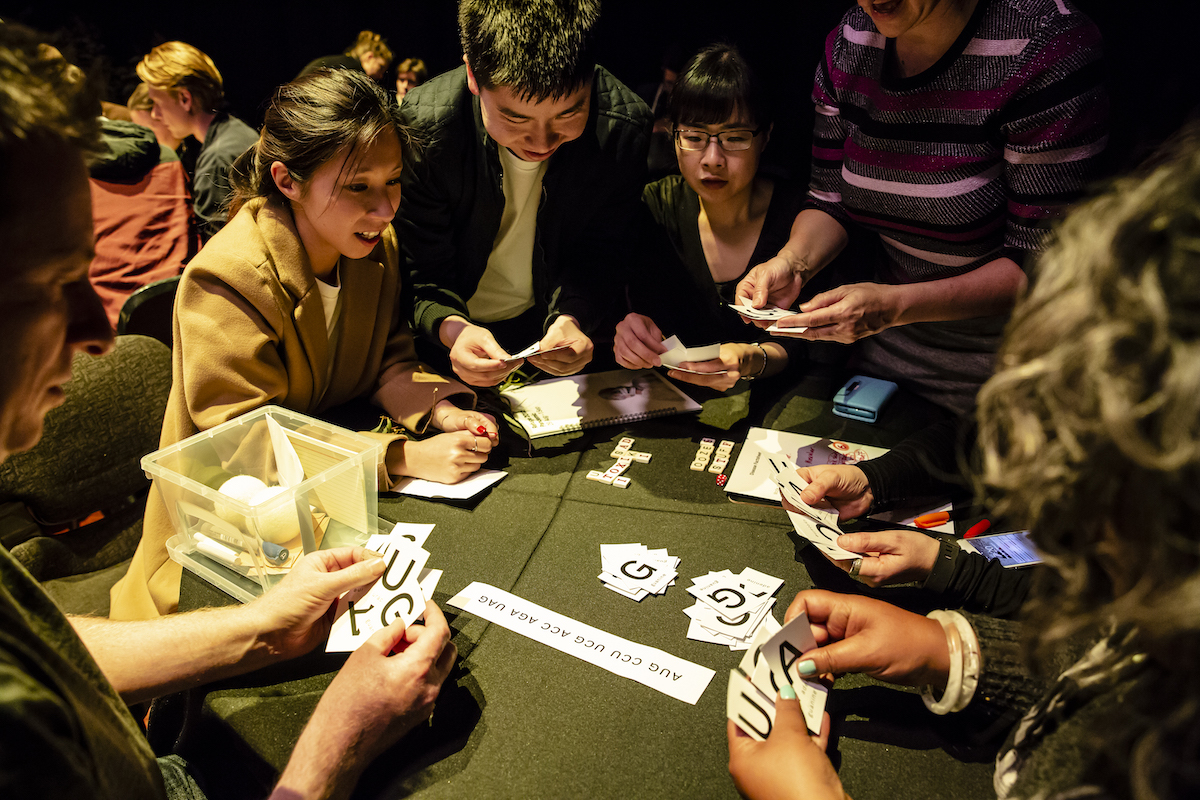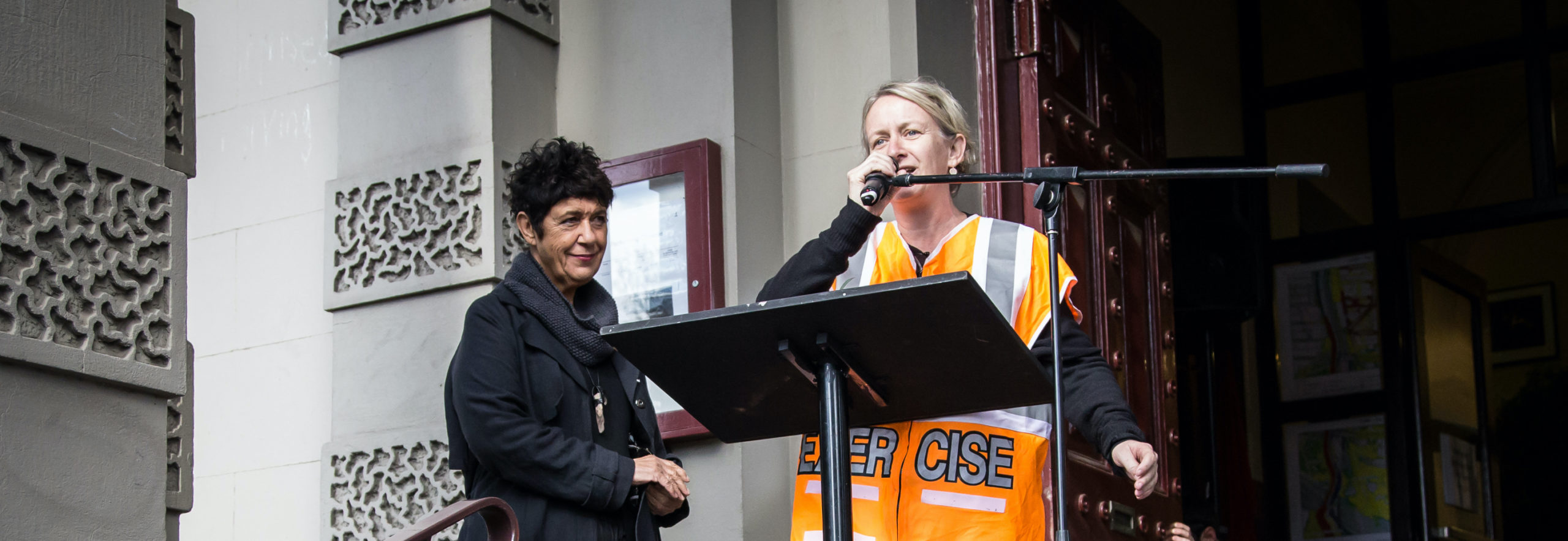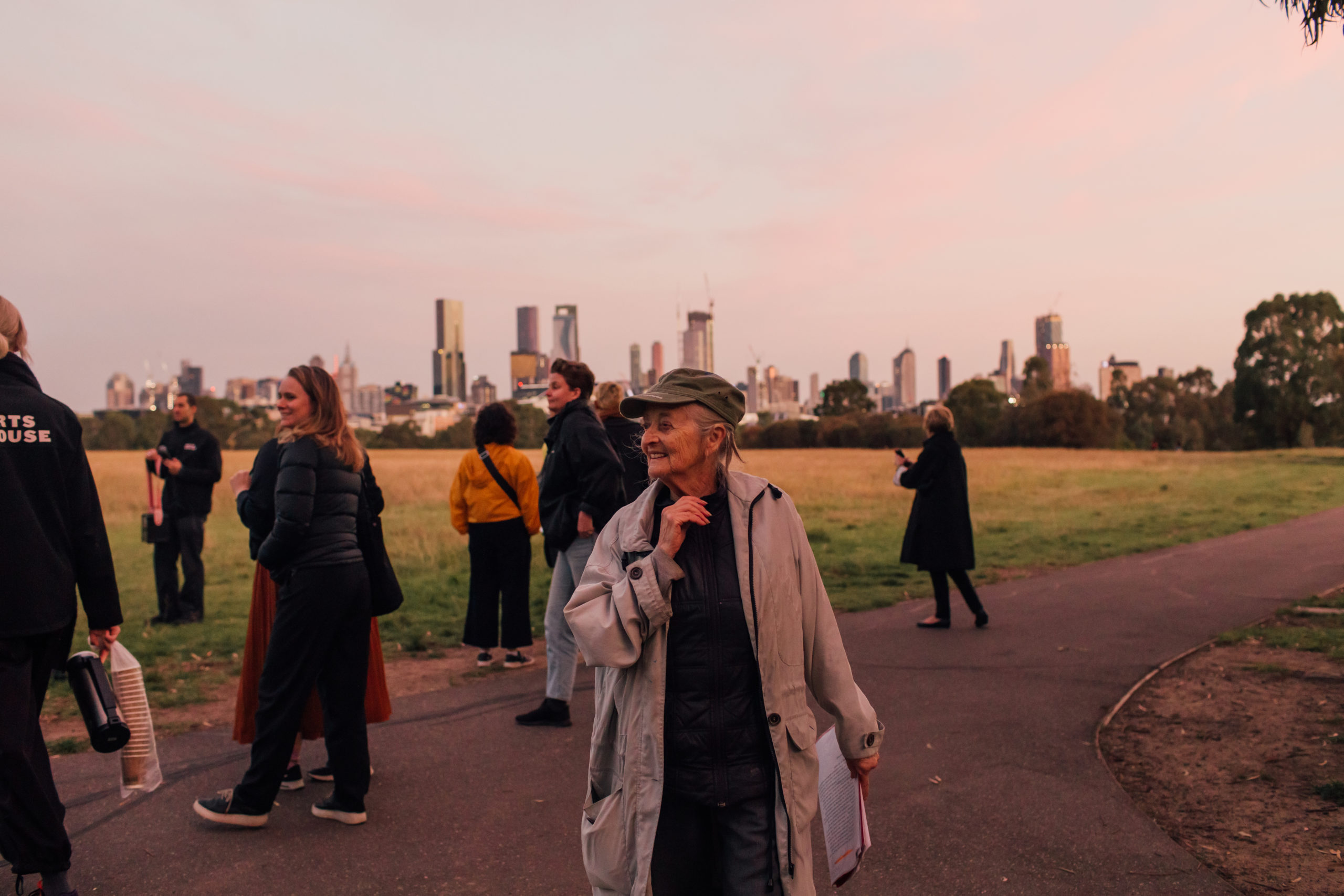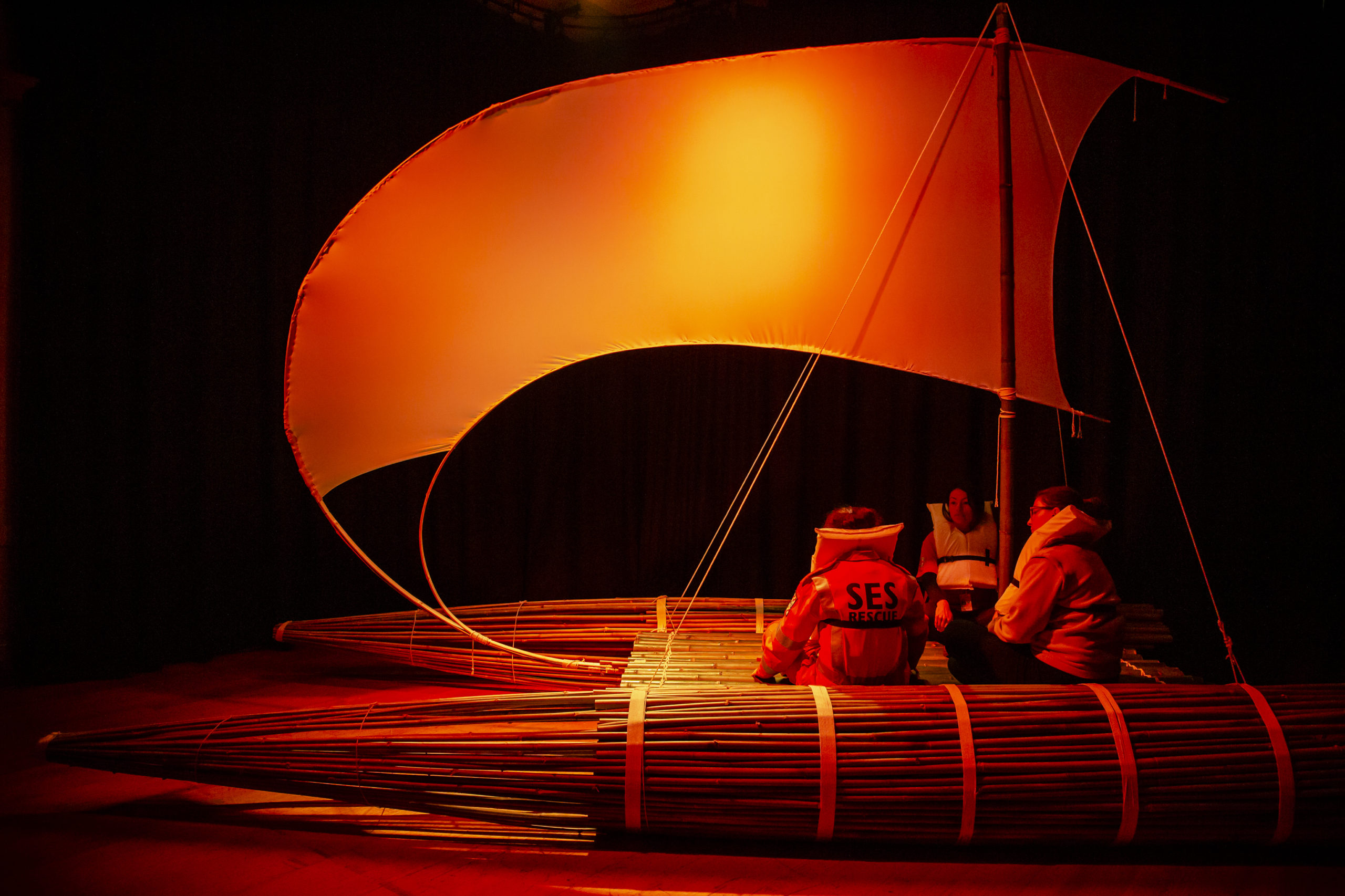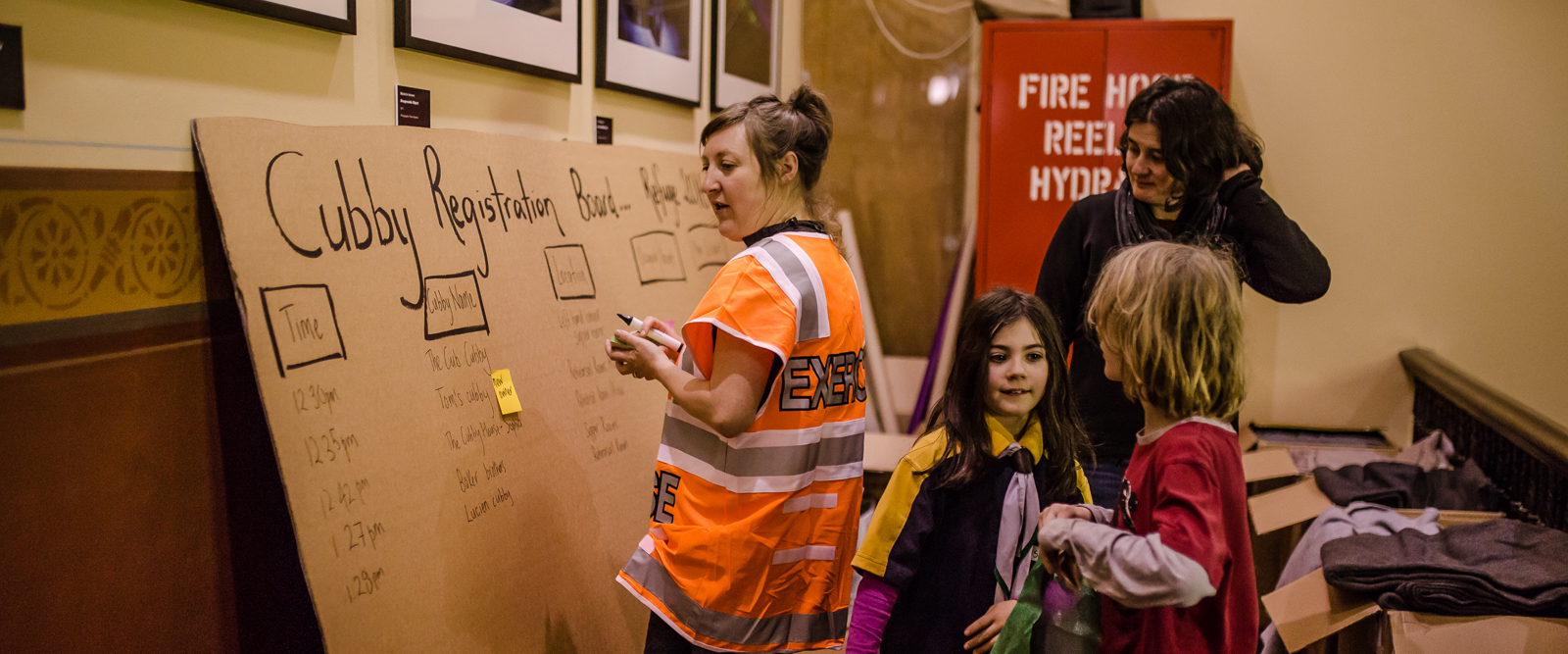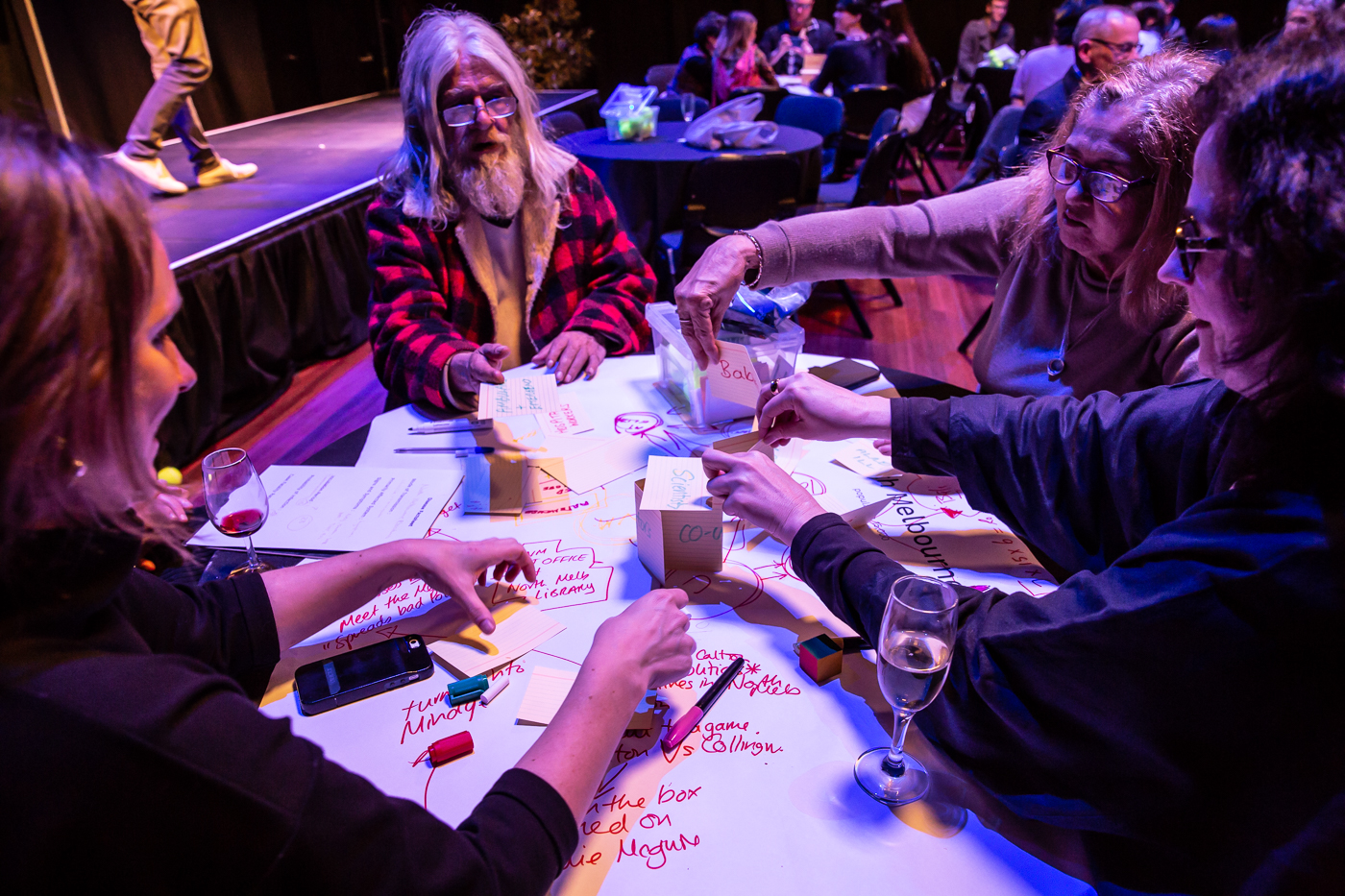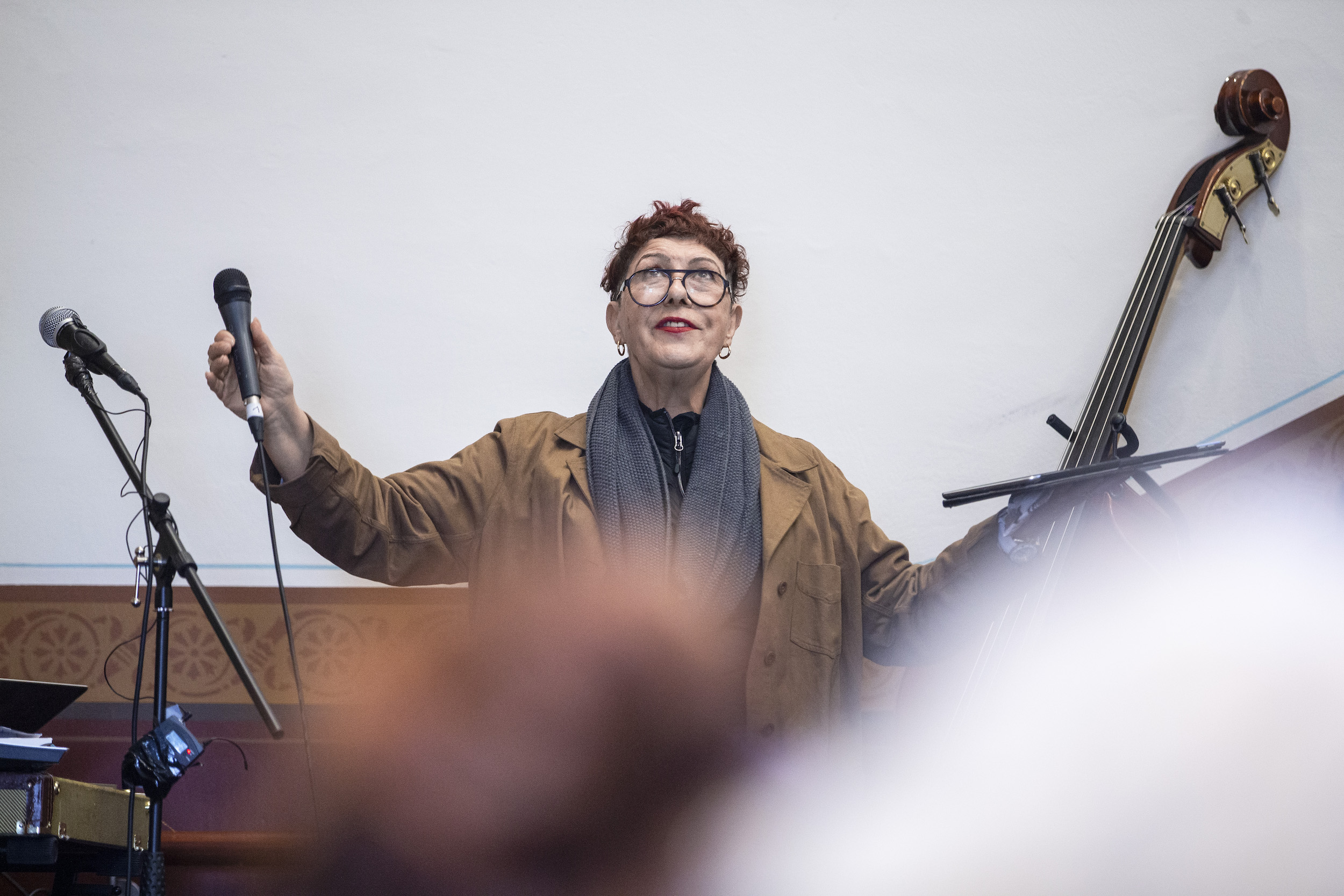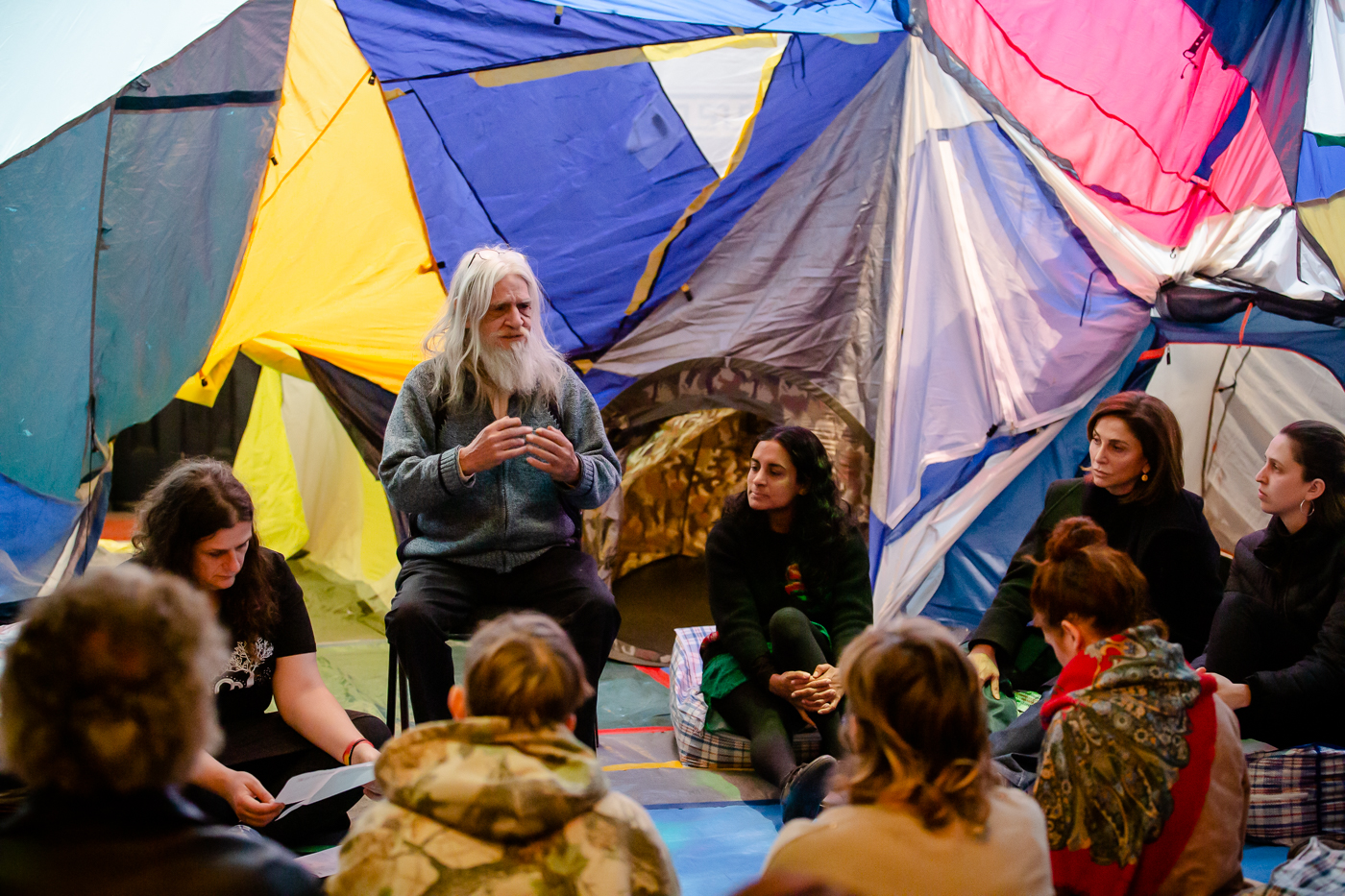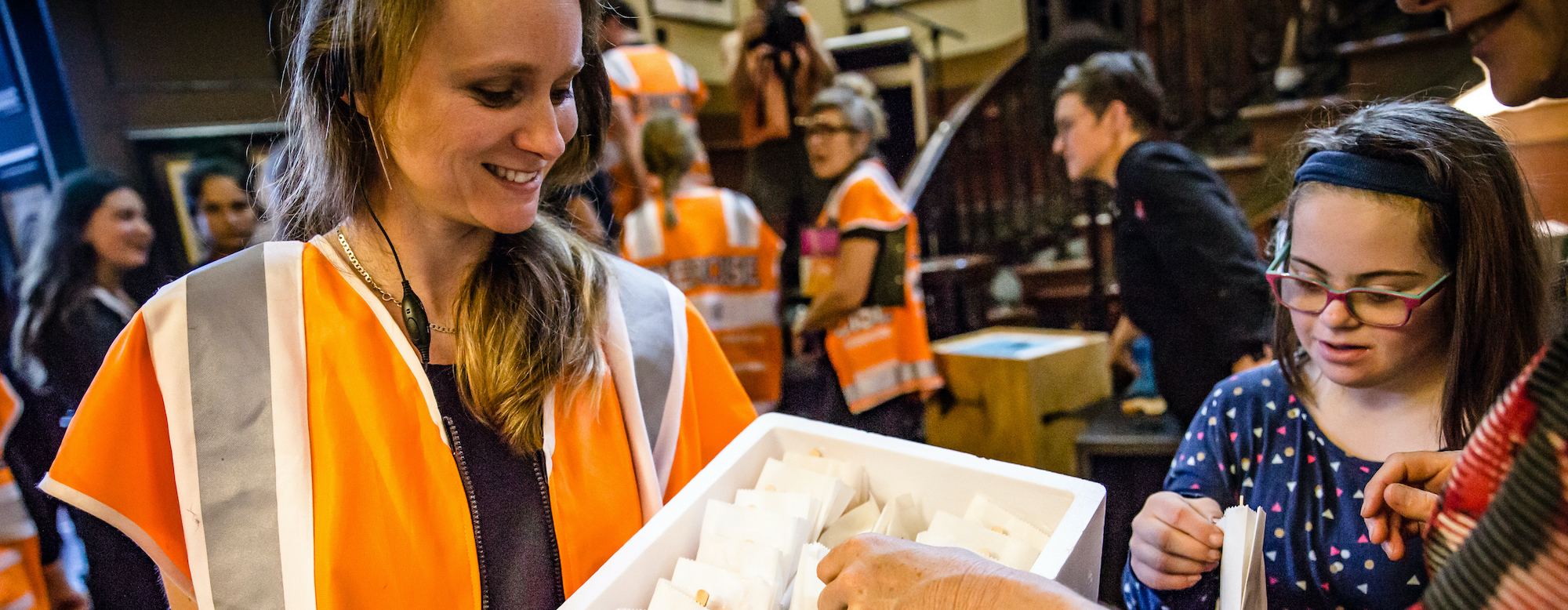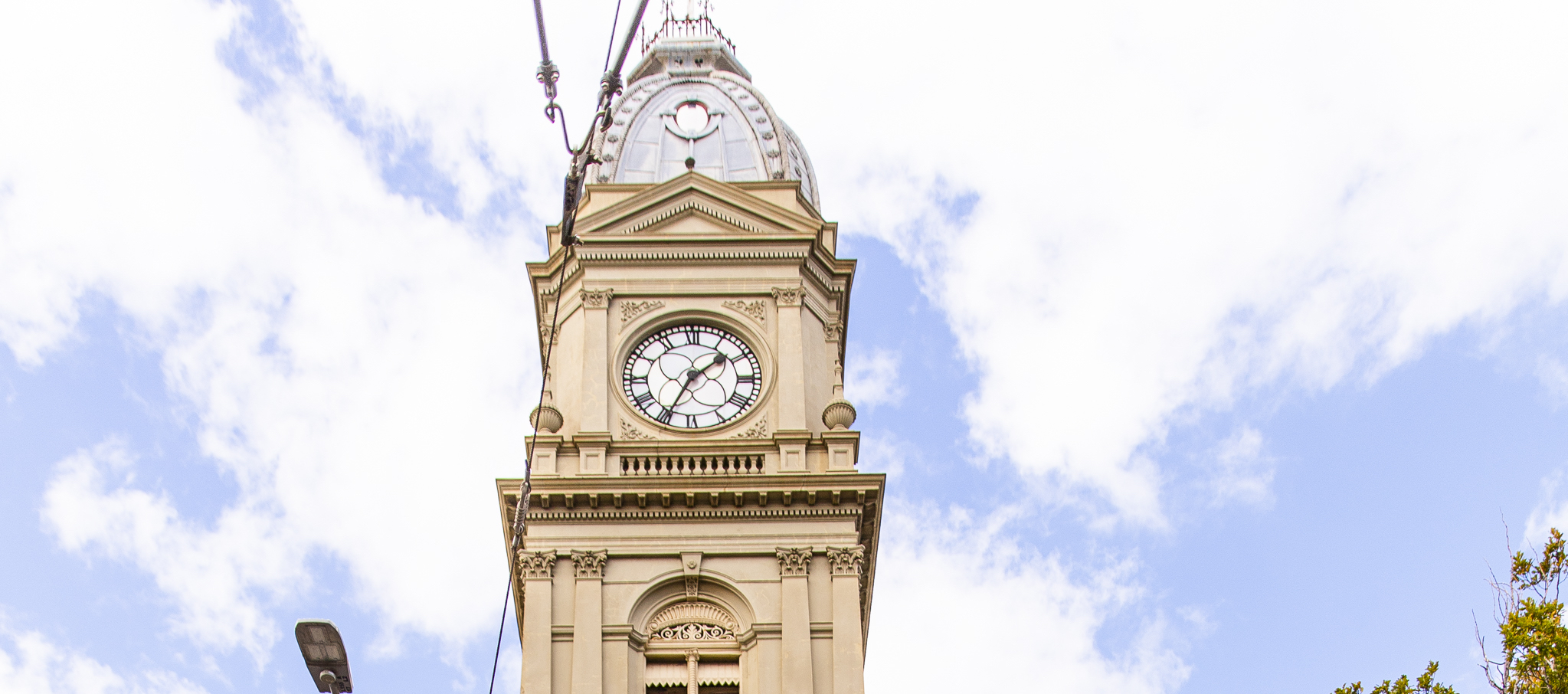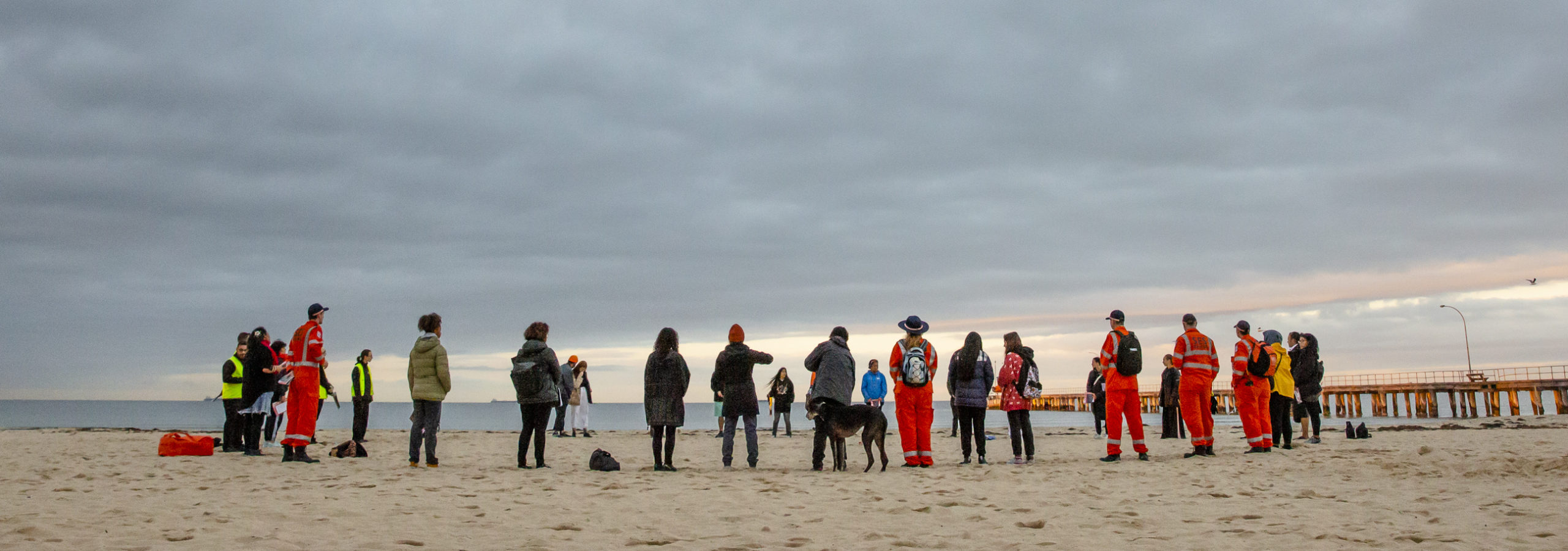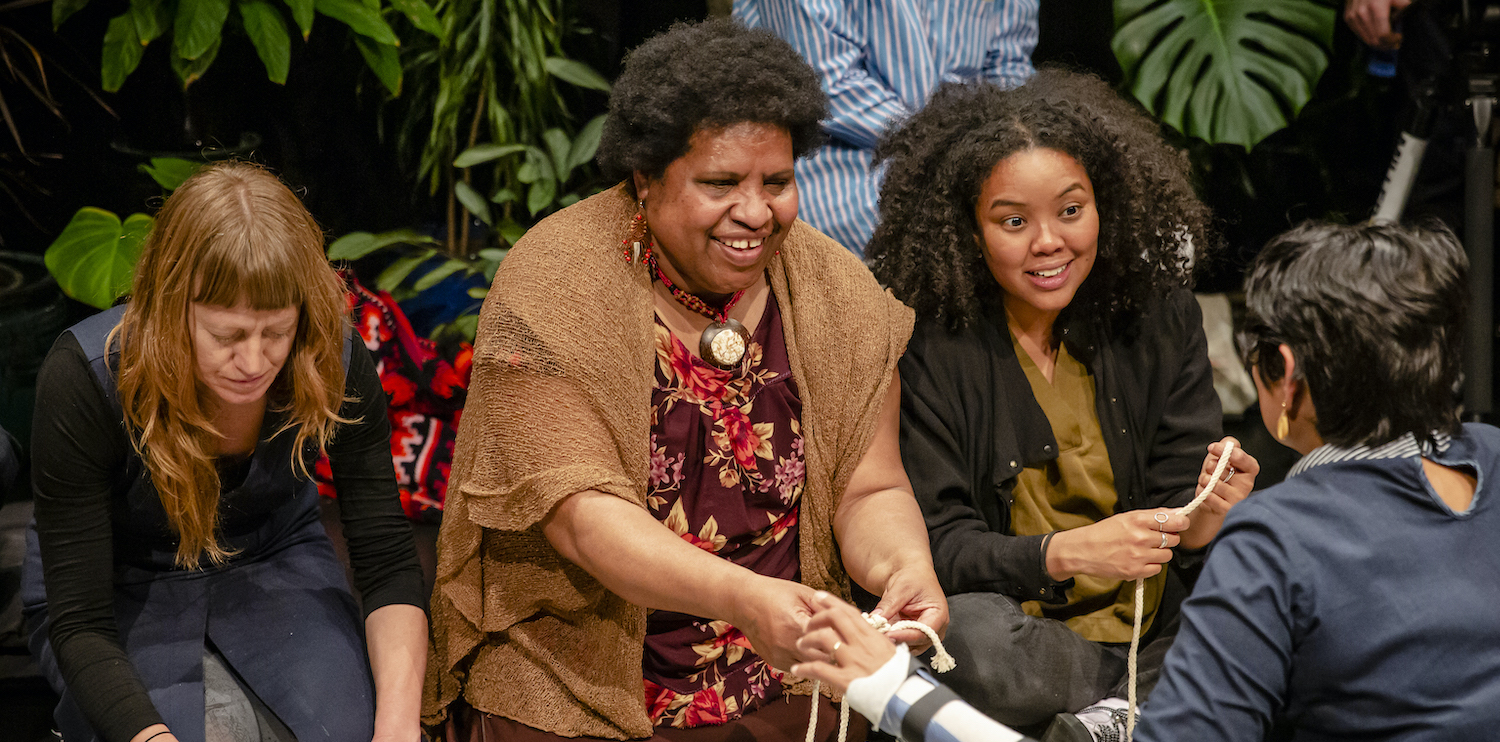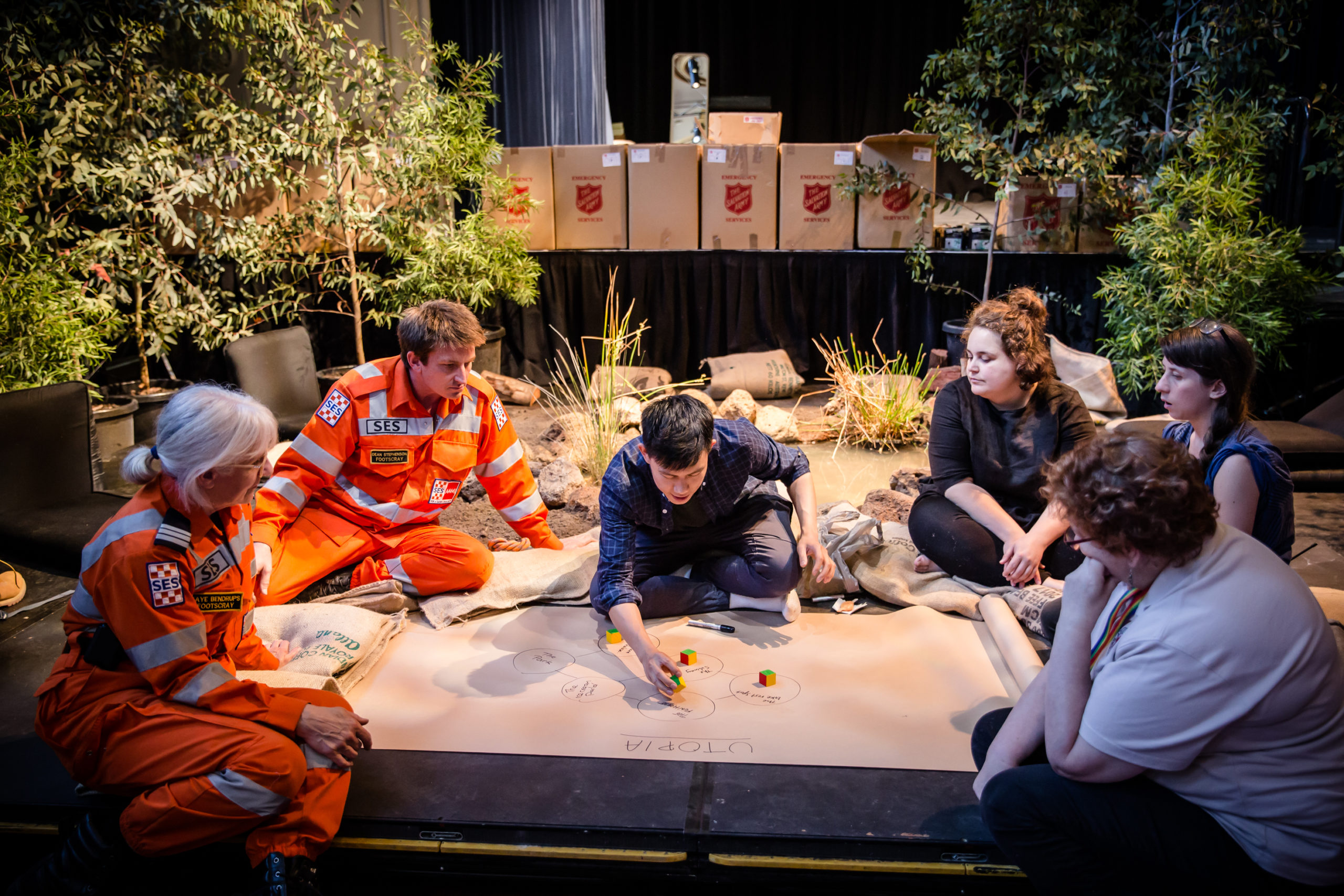The simulation is real, rehearsal is over, play’s the thing.
David Pledger
This piece is from the collection, In The Time of Refuge.
In the non-Indigenous world, modern-day disaster management began in the mid-20th C with the advent of the Civil Defence era, originally activated to deal with the conditions of the Second World War and maintained under the shadow of the subsequent threat of nuclear war. Also described as civil protection in some territories, civil defence corps and extra-governmental instrumentalities were charged with protecting citizens from external military action and the threat of natural disasters. Nation-states developed and customised such instrumentalities to local conditions which, after the Cold War (1947-1991), formed the basis of national disaster agencies. These agencies were globally connected through successive plans and frameworks largely adopted and implemented by the United Nations (UN).
In 1987, the UN declared the 1990s to be the International Decade for National Disaster Reduction, the progress of which was reviewed in Yokohama in 1994 where a Plan of Action for a Safer World was drafted. (Coppola 2007, 5-6). The Plan informed the creation of an International Strategy for Disaster Reduction which in 2015 was superseded by the Sendai Framework for Disaster Risk Reduction (2015-2030) and overseen by the United Nations Office for Disaster Risk Reduction. In the same year, the Australian Government signed up to the Sendai Framework. The Framework guides Australia’s approach to disaster risk reduction both in Australia and in our actions overseas (Department of Foreign Affairs and Trade 2021).
In Australia, the national body responsible for disaster risk reduction is Emergency Management Australia. Seeded as an agency within the Australian Defence Force and then the Department of Defence until 2001, EMA was transferred out of the Attorney-General’s Department in 2018 to become a division of the super-ministry, the Department of Home Affairs. Whilst constitutional responsibility for the coordination and planning of disasters lies with states and territories, in the event of necessity, they can call on the EMA for assistance (EMA 2021).
Each state and territory configure their emergency management structures according to relevant arrangements and local conditions. In Victoria, the ecosystem of emergency management comprises more than 60 organisations covering emergency, health and community services, local industry, public and private organisations including the State Emergency Service, Red Cross, Resilient Melbourne and local government such as City of Melbourne (EMV 2018). The oversight of that ecosystem falls to Emergency Management Victoria established in 2014 in the wake of significant organisational failures identified during the 2009 Victorian bushfires and the 2010-2011 floods. This kind of evolution of emergency management is not uncommon – from strident criticism of poor management of a natural disaster, in this case bushfires, to the setting up of a new, capable, competent entity. Worldwide, many countries, states and territories have been forced into establishing new, institutional protections as the direct result of a mismanaged disaster. This was especially so in the latter part of the 20th C (Coppola 2007, 4).
For example, in 1970, the Great Peruvian Earthquake killed more than 70,000 people. Ice and landslides did the most environmental damage, causing the greatest loss of life. On average 400 quake events occur each year but this one had a magnitude of 7.9 at the quake’s epicentre 35km off the Pacific Ocean coast where the Nazca Plate smashes up against the South American Plate.
In response to this disaster, the Peruvian government developed a national emergency management strategy that went through a number of iterations before being formalised in 2011 as the National Centre for Civil Defence (INDECI). INDECI stages a maximum of four national emergency earthquake and tsunami simulation exercises every year. These exercises involve over 70% of the population; additional exercises are held in schools. Hardwiring emergency response reflexes into the civic DNA is key to the survival of Peru’s vulnerable people. It is a remarkable mobilisation of the citizenry, embedding emergency protocols at a granular level in society. Disaster simulations involving large sections of the public or selected members across the emergency services sector are now an accepted practice in Peru and complement table-top exercises for key emergency management personnel to test various scenarios in a risk-free environment.
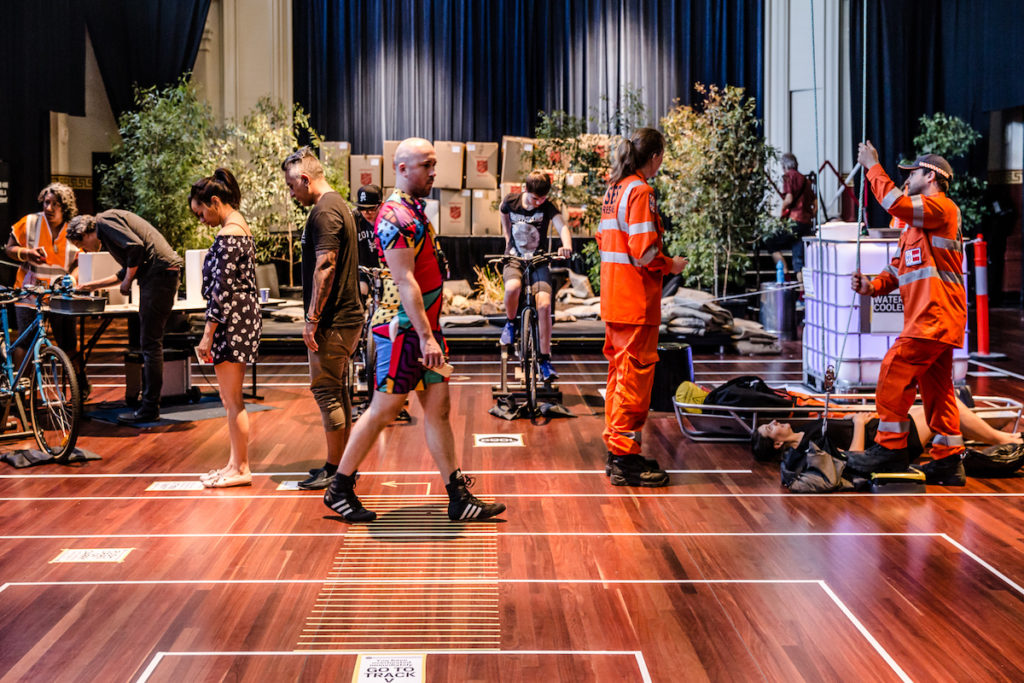
Image: Hg57 Urban Heat Island, Latai Taumoepeau, Refuge 2017: Heatwave
Photo by Bryony Jackson.
Image description: Several people walk around a circuit installation inside a town hall room comprising of exercise bikes, rope and tape on the ground marking out squares.
In 2014, Faye Bendrups, then Controller of Footscray’s State Emergency Services Unit, was awarded a grant by the Victorian Emergency Services Foundation to observe and participate in the activities of INDECI during the National Earthquake and Tsunami Simulation in the capital of Lima. Her interest centred on community involvement in the simulations and the principle of participative responsibility:
In Peru…community is not necessarily just a geographic community… for example, a suburb, it’s managed by breaking it down into very small parts…So, one school is one community. One office block is one community. One high rise apartment building is one community. One business precinct or street is one community, and so forth. So that when there’s an exercise or an emergency, those people in that relatively small location, if it’s an office block, or you know, apartment building, will basically help each other…Those people are looking after all the people they’re closest to physically, get them all out to a designated area, get them evacuated.
As an emergency services volunteer with almost 10 years’ experience, the Peruvian model was a revelation and helped identify gaps in Faye’s experience of the State of Victoria’s approach. Despite a significant shift in emergency services rhetoric over the preceding generation, one that eschewed command-and-control practices for community-led participation and response, her view was that no-one had informed the community.
…actually, the community don’t know that, really, they haven’t been told how, how do they do that? There’s no real kind of universal community buy in. It’s just said, it’s there in all the literature, it’s there in all the brochures and the forward planning and you know, but the community don’t really know that.
Not long after returning to Australia and primed to discover genuine models for participative responsibility in emergency management, Faye was introduced to the Arts House Team through City of Melbourne. Aware that the social and geographic conditions of Peru and Australia were vastly different, the prospect of simulating an Emergency Relief Centre in an artistic context appealed as a left-of-centre approach to engaging the community as well as drawing on her extensive knowledge of artistic practices given her long association as a performer, theatre director and academic.
…the thing about practice was really terrific for me because of course, in the performing arts you rehearse before you go and do something, you know, you’ve rehearsed something. So, when a really major event occurs, you’re not panicking because you know what to do. You’ve been rehearsing it all your life.
Simulation is remarkably akin to ‘rehearsal’. In the performing arts, we iterate until a performance is inscribed, embodied and repeatable: a musician must know where and how her fingers play an instrument to achieve virtuosic precision, an actor learns the position they must occupy before a light cue is activated, an operator must wait for a change of scenery before cross-fading sound-states. These are learned behaviours within proscribed parameters. Once the basic elements of a performance are learned, we simulate. We practise their order in time, calibrating emotions and physicality in order to create and re-iterate meaning over the course of a season. Simulation in disaster-preparedness similarly requires the repetition of protocols and codes to test scenarios, personnel adaptability and learning speeds in a safe environment. In real-life situations, the potential for actions to endanger lives is high whereas in a simulation mistakes can be made, and new, productive habits learned accordingly. Refuge 2016-2017 offers a unique instance in which ‘rehearsal’ is a key dramaturgical strategy of the ‘simulation’ of an Emergency Relief Centre in an emergency setting.
One of the more disconcerting pieces of media produced in the six years of Refuge uncannily demonstrates this relationship. Made for Refuge: Pandemic (2018), the Contagion video is a scene-setting tool for emergency management exercises in Melbourne that imagines reportage and media commentary of a global pandemic. It simulates the story of a worldwide spread of a zoonotic virus and the ways in which it is transmitted by human contact. Quarantines, travel bans and changes to workplace protocols are communicated with the gravitas which we, in Australia, are now all too familiar. Well-known protagonists in Victoria’s response to the 2020-21 COVID-19 Pandemic – Brett Sutton, Chief Health Officer, and Julian Druce, Head of the Virus Identification Laboratory, Doherty Institute – ‘perform’ themselves in the unfolding fiction of 2018. It’s an eerie experience to watch a video that so accurately depicts the mood, tone, characters and content of a world-changing event that actually occurs 2 years later. It creates in the viewer a dissociative response, as if the thing that is now in our lives was and forever will be there, and that the lives we lived previously were nothing more than simulations, rehearsals for reality.
This blurring of fact and fiction is key to the value of Refuge as an artistic inquiry and to its value for emergency management because while learnings may be familiar, they can also be freshly delivered.
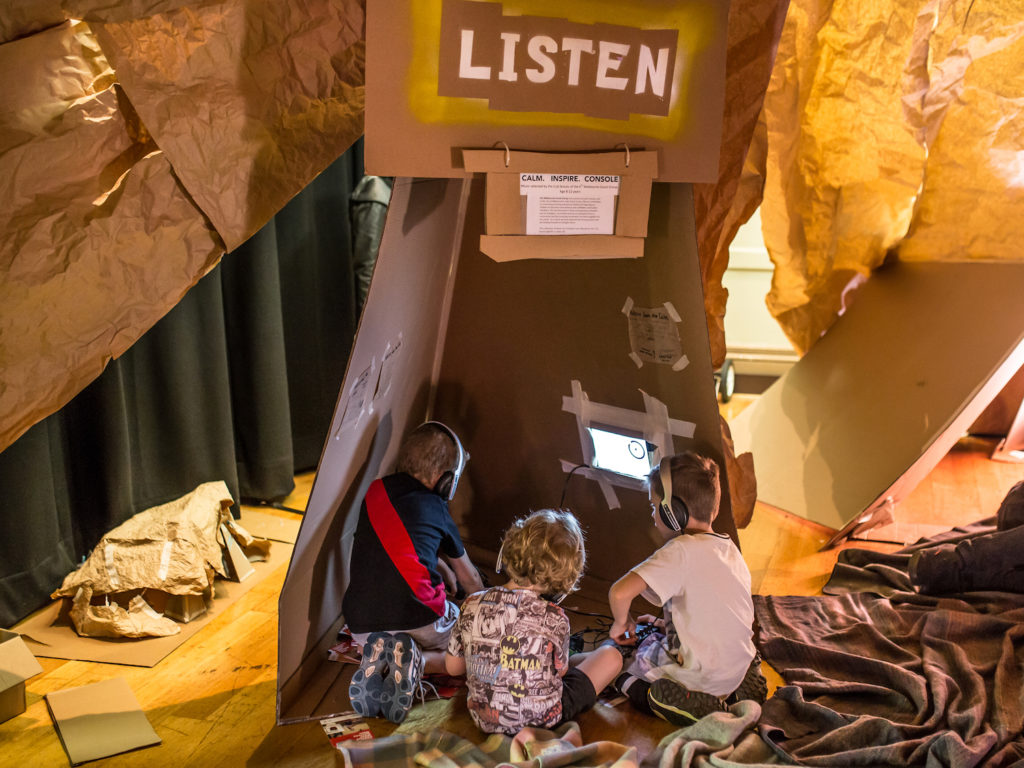
Image: Nest by Kate Sulan, Refuge 2016: Flood
Photo by Bryony Jackson
Image description: Three young children wearing headphones sit on the floor of a in a makeshift cardboard cubby house surrounded by blankets and brown paper.
In her job at City of Melbourne as Co-ordinator of Emergency Management, Christine Drummond organises simulation events annually; they bring together all the emergency management services relevant to Council operations. When Christine was approached about Refuge in 2015 by Creative Producer, Tara Prowse, a kind of dance ensued as Tara developed a language for the project through their conversations, one that could be understood in the paradigm of emergency management. Through these conversations, Christine was able to identify certain people in the field who would be receptive to an engagement with the arts. One of these was then Emergency Management Commissioner, Craig Lapsley, who attended the first Refuge: Flood in 2016. Core artist Kate Sulan’s project, Nest, invited children to play a game, dropping letters and messages of hope to adults in a letterbox. Christine remembers saying to the Commissioner it was the first time she’d heard children laughing in an Emergency Relief Centre. Of course, children should be able to laugh in an Emergency Relief Centre, and it wasn’t the first time the issue of child welfare had surfaced when planning one but here was a clear proposition to make it happen: establish a safe space for ‘play’.
One of Refuge’s key dramaturgical strategies is ‘playing in the dark’, an approach Angharad prosecuted from the get-go.
For me ‘playing in the dark’ meant that our knowledge and expertise and our questions (as artists, emergency first responders, residents, citizens, children, neighbours etc) had equal value, and that we tried not to jump to conclusions, but let the experience of making the work, creating the experience together teach us. We needed to be alert and curious to better respond to the “unintended consequences” (sometimes described as ‘failures’ in outcome focussed processes) of the collaborations. This was often where new capacities were uncovered. Where hope was discovered.
Because of her background, Faye Bendrups could read the artistic landscape of Refuge but it didn’t provide any guarantee that she could process the learnings back into the practices and interactions within her Unit. Her starting point was to bring along to Refuge those members of her team who happened to be rostered on over the weekends that North Melbourne Town Hall was turned into an Emergency Relief Centre. It was important that her team of volunteers approached the program as necessary training in the same way that they might approach boat rescue or the removal of dangerous debris. She discovered early that Refuge shares a philosophical empathy with the way in which she managed her unit; she promoted inclusion and attributed equal value to the tasks of chainsaw operation and community engagement. Refuge reinforced that philosophy, but it also catalysed thinking around how her Unit might better engage the community, particularly around the employ of ‘play’.
So, we’ve got games that we play, so that when we go to do children’s events, or even adult events or local festivals, we’ve got a series of games that we play with people, and which kind of educate them, you know, in a different way… By participative engagement, we are teaching them about emergency, but it’s through games and game playing… it’s just that thing of, at a very local level, and a very simple level, we’ve changed the way we look at how we engage with community.
In 2013, Steve Cameron, Manager at Emergency Management Victoria commenced drafting the ‘Community-based Emergency Management (CBEM) approach’. In doing so, he effectively challenged traditional top-down emergency management processes by proposing that the community lead with the support of others when needed. At the first LAB, he outlined the strengths-based approach as ‘an exercise in navigation’ to the assembled stakeholders – artists, cultural operators, emergency management and council representatives – to which Lorna Hannan, leading a chorus of artists, said ‘oh we do all our projects like that.’ In time, Steve came to realise that Refuge was an exemplar of his approach, what artists and arts workers often refer to as a ‘structured improvisation’ taking the form of deliberative play.
Play helps re-wire our behaviours, disrupts our habits, opens up new spaces for doing, thinking, creating. Play is fun. It engages and activates the imagination. It creates forward momentum. Core Refuge artist Harry Lee Shang Lun is something of a ‘play specialist’ observing a troubling correlation between the social practice of ‘play’ and the conditions of climate change: the system that undervalues play is one that is leading us towards the disasters that we’re experiencing.
In Shang Lun’s framing, play fulfils multiple functions. It gives people the agency to renegotiate and re-navigate the systems we find ourselves bound by; play provides an opportunity to practice skills in a safer environment without permanent consequences – similar to the experience of simulation – and play allows us to be someone else for a moment to indulge in role-play, a place where we can be confused and delight our senses: play becomes not actually a verb, but an approach or a modality.
Transcribing this to the artistic fields of Refuge, he distinguishes between the concepts of navigation and configuration:
…playing is an act of navigating, not configuring… the psycho geographical analogy would be walking through a city where you can’t take every pathway, and you don’t necessarily know where every pathway leads. So that’s the playing in the dark analogy, so to speak. And that’s what it feels like to be acting in the face of climate change, to be making art on stolen land. To do any of these things feels like navigation, much more than it feels like configuration, right? we don’t know the full system, we don’t know the possible outcomes in their entirety. And we don’t know until we try.
A critical difference between navigation and configuration is the engagement of reason. Configuration is a process based on reason whereas navigation is entirely subject to response. It’s a key trope in gaming, particularly single-player, quest-oriented games. It’s what makes the experience visceral, kinaesthetic. As you navigate your way through various landscapes and epic narratives, you are aware of an atmosphere of story in which many landscapes and narrative spaces exist simultaneously to the one you have chosen to pursue. And by pursuing it you are creating a unique experience. For Shang Lun,
play is a natural way for us to understand and navigate systems on a level that can speak to people’s hearts, rather than their minds. The process of playing together well is hopefully what leads to better outcomes.
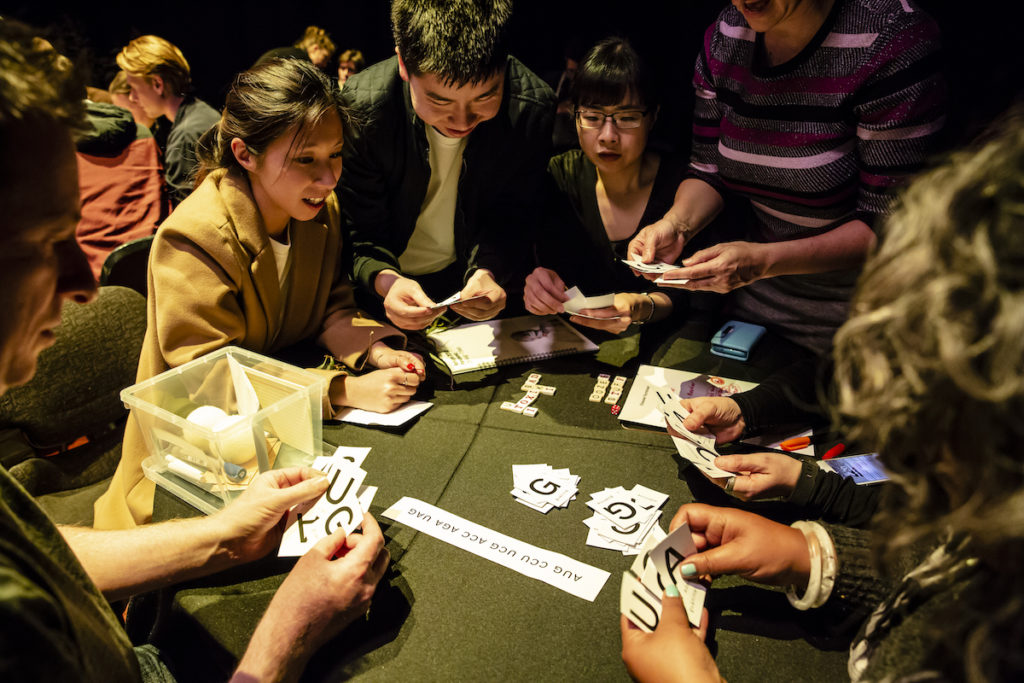
Image: Isolate and Contain! Mapping the Pandemic by Harry Lee Shang Lun with PlayReactive, Refuge 2018: Pandemic
Photo by Bryony Jackson.
Image description: Several people sit and stand huddled around a table playing a game with white pieces of paper with English alphabet letters on them.
A common thread in conversations with emergency management personnel involved in Refuge is that if you’ve had the experience of imagining a disaster scenario in a way that is fun, in a way that activates ‘play’, then the stress of a real emergency is significantly diminished. The integration of ‘play’ in disaster-preparedness can manifest genuine positive outcomes for people and shift attitudes to planning. The two are intimately connected.
Damien Moloney, formerly an emergency field logistician for Medecins Sans Frontieres and now at Australian Red Cross, worked as a collaborator on artist Kate Sulan’s project with St Joseph’s Learning Centre, In Case Of… (2016-2019). He has extensive experience of people operating, coping in and surviving emergency situations. Critically, the quality of disaster-preparedness is directly proportional to the quality of response and recovery. This relates to the economy, to the health system; it is particularly pertinent to people. When people feel empowered in an emergency situation, they deal better with grief and loss. When they don’t, they struggle. Speaking to ABC Radio National’s Life Matters, Damien maps a direct relationship between preparation and response:
People who are prepared for an emergency recover better from emergency and they respond better to an emergency.
In 2018, the same year Refuge turned its attention to a pandemic scenario, Christine Drummond ran a ‘traditional’ simulation, Exercise Contagion. Not so much a coincidence, as Refuge scenarios had been drafted from Council’s Emergency Management Plan.
…having done Exercise Contagion actually helped us because after the exercise, everybody reviewed their pandemic plans… So, it prompted people to do stuff. And so we didn’t have a blank page last year when it hit us, people had actually turned their minds to it. So, it is the value of training and exercising in a traditional sense, but also events like Refuge, it’s like a fun way of looking at something, you know, it’s more interactive, and the artists with a creative overlay can make it, I think, less threatening or confronting in a way to look at it through that prism.
In emergency planning, management often manufacture templates, ways of doing things that can be applied across multiple scenarios: classic managerialism. For Steve Cameron, every community is complex and different, as is every emergency.
People can have very different experiences from the same emergency. We are also often tempted to simply apply what some have observed or experienced from simulations and real events, to better manage future events. This can be attributed to hope and a misleading assumption that these processes will assist us to better manage what we believe are similar situations.
Valorising process, Steve Cameron pushes back on any desire for the Refuge program to create an ongoing set of protocols:
Please do not create a template of how we did it last year (as this creates) structures and templates that won’t work (in new situations): there are too many variables and challenges in any disaster (MacDowall and Fraser 2018, 4).
You’re better off preparing the people than producing a plan.
Our whole thinking process and ability to be safer, more resilient, as people and as a community is about understanding and adapting and learning and taking on the situation, according to what we know, and the collective skills, experience and potential that we all bring.
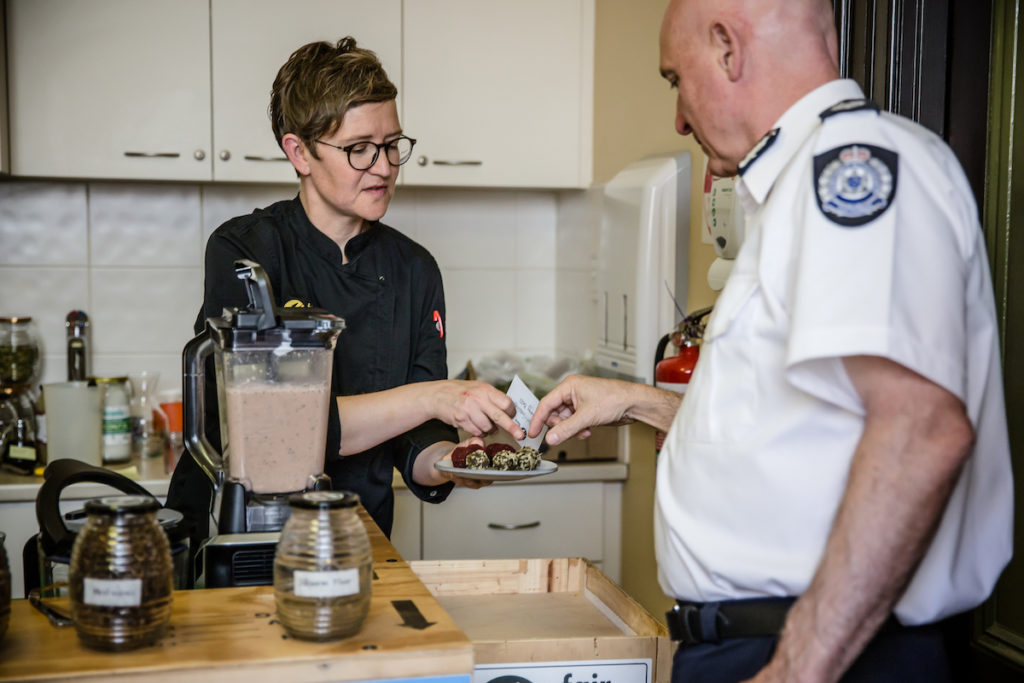
Image: Jen Rae and Former Emergency Manager Commissioner Craig Lapsley pictured in Future Proof by Fair Share Fare, Refuge 2017: Heatwave, Photo by Bryony Jackson.
Image description: A woman with short brown hair and glasses, wearing a neat black uniform stands in front of a blender and two jars in a kitchen at Arts House. She offers a plate of food to a man on her right who wears an Emergency Management Victoria uniform.
People with the capacity for understanding, adapting, learning and playing are integral to emergency management. They are also key attributes in an artistic practice. Always be available. Always be responsive. Always be prepared to start again.
A hard lesson one learns as a performer is to shed the skin of the previous performance and begin anew every time. Forget the success. Forget the failure. Begin with a blank canvas. Stand on the technique you have developed and acquired through weeks of playing in rehearsal and trust that you will be ready for the unique conditions of every performance. Refuge teaches us that it is the same in emergency management. The conditions of each emergency are unique. The degree of preparedness, the education and capacity of the individual, the community, the people to put that preparation to effect through the experience of play in simulation over time is key to our survival, to the continuity of our species.
References
Coppola, Damien P. 2007. Introduction to International Disaster Management. Oxford: Elsevier
MacDowall, L., and Fraser, S. 2018. Refuge 2017 Evaluation Report, Research Unit of Public Cultures, The University of Melbourne.
Papastergiadis, N. 2017. The End of the Global South and the Cultures of the South. Thesis Eleven, Vol. 142, Issue 1.
Life Matters, ABC Radio National, August 28, 2019 (accessed October 11, 2021)
EMV, Creating Safer and More Resilient Communities. 2018. Our Story.pdf. Emergency Management Victoria
https://www.dfat.gov.au/development/topics/investment-priorities/building-resilience/drr/disaster-risk-reduction-and-resilience (accessed October 11, 2021)
https://en.wikipedia.org/wiki/Emergency_Management_Australia (accessed October 11, 2021)
Header Image: Street Plan, Faye Bendrups SES, Refuge 2019: Displacement, Photo by Harjono Djoyobisono
Image description: A woman wearing an orange SES uniform directs people with her walking on a footpath outside North Melbourne Town Hall on Queensberry Street. Her left arm is reaching into the sky. On her far right are two SES workers in orange uniform and on her left is several people including Australian Red Cross volunteers following her instructions.
About David Pledger
